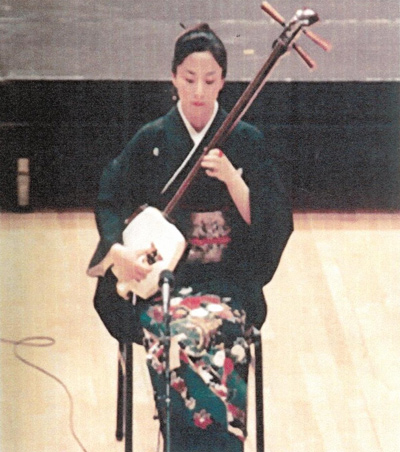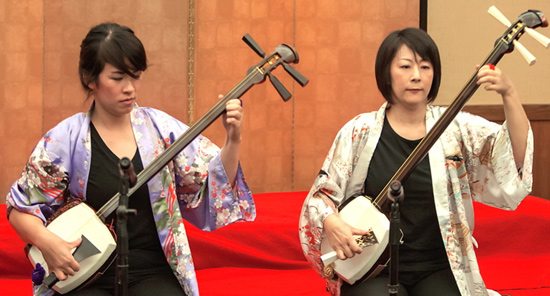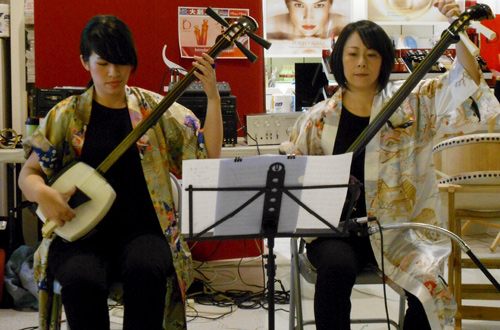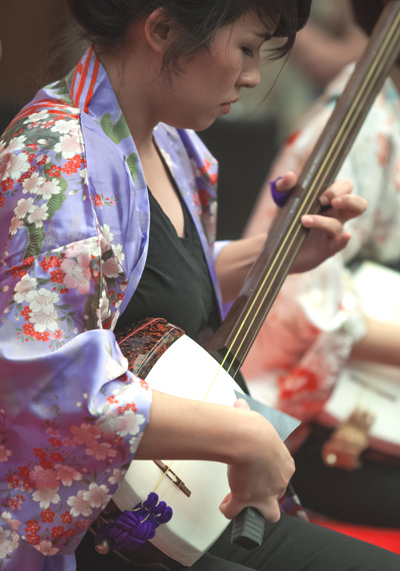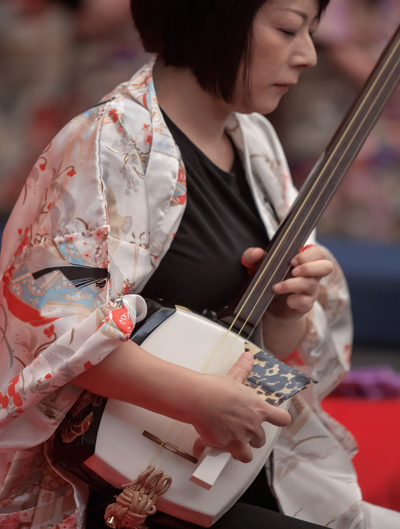Miho Kurachi
Tsugaru shamisen is a three-stringed instrument which has its origins in the Tsugaru region of Aomori, Japan. The earliest form of shamisen made its way from China to Okinawa, Japan, in the 16th century. Of the three most common types of shamisen in Japan, the tsugaru shamisen is the largest in size. There is extensive tsugaru shamisen repertoire known as tsugaru minyo, which is comprised of folk songs unique to the Tsugaru region that tell stories of changing weather and seasons. The folk songs and style of tsugaru shamisen are beleived to have their origins from bosama and gozen, who were blind nomadic male and female, respectively, shamisen palyers. The bosama and gozen woud wander and play the shamisen in exchange for shelter and food. From these unique and humble origins, the tsugaru shamisen is the only such form of shamisen that can be performed as a solo instrument within minyo (Japanese folk) music.
Miho Kurachi has been studying and performing tsugaru shamisen for nearly three decades. She began studying the instrument under the direction of Mitsuyoshi Sasaki in the Ibaraki Prefecture of Japan. Miho has performed tsugaru shamisen worldwide and is the co-founder of the tsugaru minyo ensemble Sasaki Mitsuru Sangenkai.
As a master artist in ACTA’s Apprenticeship Program in 2014, Miho worked with apprentice Terry Nguyen, teaching her the repertoire of tsugaru minyo and the technique of the tsugaru shamisen.

